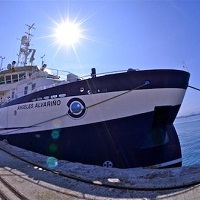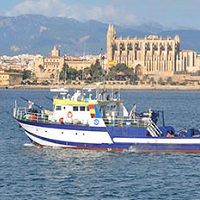Keyword
Differential Global Positioning System receivers
194 record(s)
Type of resources
Categories
Topics
INSPIRE themes
Keywords
Contact for the resource
Provided by
Years
Formats
Status
-

Study and evaluation of the biomass of the anchovy in the Bay of Biscay within the National Sampling Plan.
-

Study and evaluation of the biomass of the anchovy in the Bay of Biscay within the National Sampling Plan.
-

Study and evaluation of the biomass of the anchovy in the Bay of Biscay within the National Sampling Plan.
-

The main objevtive of the FAUCES 1 bis is the identification of the rececent morphosedimentary feaures of two submarine canyons in the Albroan sea , Guadiaro and Garrucha. To achive this general objetive, we adquire data with the TOPAS system and the mulbeam bathimetry.
-

Swath bathymetry, high definition seismic reflection and habitat mapping of the insular shelf of Menorca.
-

Study of different sectors of the Mediterranean margins of Andalusia to analyze the potential existing active tectonic structures, capable of generating geological risks either due to the generation of earthquakes, or secondarily due to the triggering of landslides and / or tsunamis.
-

Make the underwater archaeological chart of the coast of Murcia.
-

Bathymetry and seismic work on the coast of the island of Menorca (Baleares Islands)
-

The ZEE-2001-EZA campaign was part of the program "OCEANOGRAPHIC HYDROGRAPHIC STUDY OF THE EXCLUSIVE SPANISH ECONOMIC ZONE" (PIHOZE), approved by the Council of Ministers, dated April 22, 1993, and carried out by the Hydrographic Institute of the Navy (IHM) and the Spanish Institute of Oceanography (IEO). The ZEE-2001-EZA campaign aimed to carry out the necessary work to obtain the hydrographic-oceanographic knowledge of the eastern part of the Canarian Archipelago, mainly the areas adjacent to the Islands of Fuerteventura and Lanzarote and complete the work carried out during the campaigns Zee-98, Zee-99 and Zee-00, carried out aboard the B.I.O. Hesperides
-

Historical series of oceanographic data in the Vigo Estuary and adjacent platform.
 Catálogo de datos del IEO
Catálogo de datos del IEO